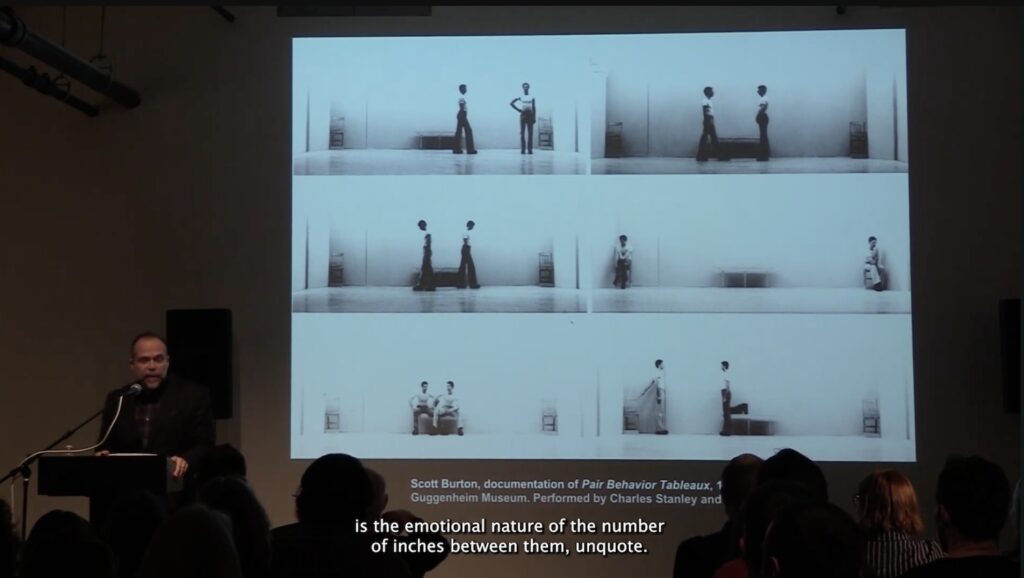Speaking of Scott Burton, David Getsy recently posted his December 2023 presentation at Artists Space 0n his Dedalus Foundation Award-winning book, Queer Behavior: Scott Burton and Performance Art, and it is full of fascinating bangers.
This book, 20 years in the making, is somehow the first monograph on Burton, and it sounds full of revelations and new information, based on the artist’s archives and decades of first-person interviews. Burton’s early performances are grounded, Getsy argues, in the queer experience of public and private space, and the examination of and navigation through heteronormative interactions and culture.

A series of performances in museums and at Documenta in the 1970s called Behavior Tableaux were about body language, hidden or discovered communications, and the enactment of power. Getsy explains how they were based in part on street cruising, and the lexicon of movement, gesture, and expression that gay people developed, both to survive and to connect with each other. In less obvious but no less important ways, Burton specified the constrained, limited, and distant spatial experience of the audience, too

It was alongside and out of these performances and Burton’s research—both academic and, uh, in the field—that he created his furniture-like sculptures. The first one, Bronze Chair, debuted on the street across from Artists Space in 1975. Before he gets to the furniture, Getsy talks about Burton’s performances and artworks that deal with Carl Andre, Lynda Benglis, and Robert Morris, right in the thick of the 1970’s art world’s complicated dealings with feminism, gay liberation, and macho bullshit. It’s a tantalizing preview of what sounds like an important book.
David Getsy on Queer Behavior: Scott Burton and Performance Art [youtube]
Buy Queer Behavior: Scott Burton and Performance Art from Amazon or UChicago Press
Previously, related: Scott Burton-inspired chair-inspired sculptures by RO/LU
PREVIOUSLY HOW DID I MISS BLOCK OR FORGET THIS: Getsy spoke about Burton’s development of his sculpture and performance as a response and critique to Minimalism and Michael Fried’s critique of it, at the 2011 symposium for Hide/Seek at the National Portrait Gallery, which I attended. And which I blogged about at the time. Oh, blogged about catching two lectures. “Does anyone even read this website?” he yelled into his front-facing camera.
